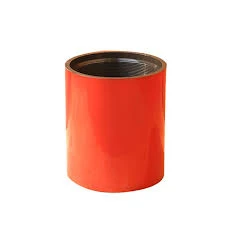- Afrikaans
- Albanian
- Amharic
- Arabic
- Armenian
- Azerbaijani
- Basque
- Belarusian
- Bengali
- Bosnian
- Bulgarian
- Catalan
- Cebuano
- Corsican
- Croatian
- Czech
- Danish
- Dutch
- English
- Esperanto
- Estonian
- Finnish
- French
- Frisian
- Galician
- Georgian
- German
- Greek
- Gujarati
- Haitian Creole
- hausa
- hawaiian
- Hebrew
- Hindi
- Miao
- Hungarian
- Icelandic
- igbo
- Indonesian
- irish
- Italian
- Japanese
- Javanese
- Kannada
- kazakh
- Khmer
- Rwandese
- Korean
- Kurdish
- Kyrgyz
- Lao
- Latin
- Latvian
- Lithuanian
- Luxembourgish
- Macedonian
- Malgashi
- Malay
- Malayalam
- Maltese
- Maori
- Marathi
- Mongolian
- Myanmar
- Nepali
- Norwegian
- Norwegian
- Occitan
- Pashto
- Persian
- Polish
- Portuguese
- Punjabi
- Romanian
- Russian
- Samoan
- Scottish Gaelic
- Serbian
- Sesotho
- Shona
- Sindhi
- Sinhala
- Slovak
- Slovenian
- Somali
- Spanish
- Sundanese
- Swahili
- Swedish
- Tagalog
- Tajik
- Tamil
- Tatar
- Telugu
- Thai
- Turkish
- Turkmen
- Ukrainian
- Urdu
- Uighur
- Uzbek
- Vietnamese
- Welsh
- Bantu
- Yiddish
- Yoruba
- Zulu
Exploring the Unique Features of Bull Plug Designs and Their Uses
Understanding Bull Plugs A Comprehensive Overview
Bull plugs, often referred to in various industrial and engineering contexts, are essential components designed to seal off the ends of pipes or fittings without any fluid leakage. They come in various shapes, sizes, and materials to suit a multitude of applications.
What is a Bull Plug?
A bull plug is typically a solid, rounded plug used to cap off a pipe or fitting. The term bull may derive from its robust design and its ability to withstand significant pressure. Unlike traditional plugs that may employ threads or other fastening systems, bull plugs are usually designed for a tighter, more secure fit. They are commonly used in both high-pressure and low-pressure systems and are crucial in preventing contamination and preserving the integrity of the system.
Applications of Bull Plugs
Bull plugs are widely used across multiple industries including oil and gas, water treatment, and construction. In the oil and gas sector, they serve to protect pipelines during construction and maintenance, ensuring that no contaminants enter the system. Similarly, in water treatment facilities, they are used to seal off pipes during inspections or repairs, preventing any accidental leaks or spills that could harm the environment.
Additionally, bull plugs are found in HVAC (Heating, Ventilation, and Air Conditioning) systems to seal off unused ports or to temporarily close off lines during maintenance work. Their versatility extends even to automotive applications, where they can be used to cap off fuel lines or coolant passages during repairs.
Material Choices
bull plug

The material selection for bull plugs is critical and typically depends on the environment in which they will be used
. Common materials include- Steel Known for its strength and durability, steel bull plugs are often used in high-pressure applications. - Plastic Lightweight and resistant to corrosion, plastic bull plugs are ideal for situations where weight is a concern. - Rubber Often used for temporary applications, rubber bull plugs create a flexible seal that can accommodate slight irregularities in pipe dimensions.
Each material has its advantages, thus making it vital to choose the right one based on the specific requirements of the application.
Installation and Use
Installing a bull plug might seem straightforward, but ensuring a perfect seal is crucial. The steps usually involve cleaning the pipe’s end to remove any debris or corrosion that could compromise the seal. Next, the bull plug is inserted into the pipe until it fits snugly. Depending on the type of bull plug, additional sealants, gaskets, or fastening mechanisms may be used to guarantee a leak-proof seal.
It’s also essential to regularly inspect bull plugs while they are in use. This ensures they remain effective, especially in high-pressure systems where any failure can lead to significant consequences, including accidents or costly downtime.
Conclusion
In summary, bull plugs are a vital component in many industries, offering robust sealing solutions for various piping applications. Their diverse materials and designs cater to different requirements, making them indispensable in maintaining system integrity and preventing leaks. Understanding their function, applications, and considerations for use can help professionals choose the right bull plugs for their projects, ensuring safety and reliability in their operations. Whether in construction, oil and gas, or water treatment, the role of bull plugs cannot be overstated; they are key players in the world of piping and fluid management.
-
Tubing Pup Joints: Essential Components for Oil and Gas OperationsNewsJul.10,2025
-
Pup Joints: Essential Components for Reliable Drilling OperationsNewsJul.10,2025
-
Pipe Couplings: Connecting Your World EfficientlyNewsJul.10,2025
-
Mastering Oilfield Operations with Quality Tubing and CasingNewsJul.10,2025
-
High-Quality Casing Couplings for Every NeedNewsJul.10,2025
-
Boost Your Drilling Efficiency with Premium Crossover Tools & Seating NipplesNewsJul.10,2025







